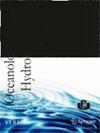Characteristics of morphodynamic conditions in the shallows of Puck Bay (southern Baltic Sea)
IF 1
4区 环境科学与生态学
Q4 OCEANOGRAPHY
引用次数: 0
Abstract
Abstract Puck Bay is an unusual and thus interesting coastal water region, as it combines two different environments – a lagoon and the sea. They differ from each other in their seabed morphology, salinity, dynamics and water exchange. Their common elements are the extensive shallows and the vicinity of the Hel Peninsula. The shallows of Puck Bay have developed at various stages of its evolution, which began several thousand years ago and continues to this day. They have been shaped by varying morphogenetic factors resulting from changes in sea level and accompanying evolution phases of sand barriers, e.g. washover fans, as well as the intensity and directions of sediment transport. At present, the shallows cover more than 35% of the seabed area and are influenced by hydrodynamic factors and availability of sediments. The study area was divided into five fields, taking into account morphological and genetic criteria as well as recent hydrodynamic conditions. This study provides an updated map with classification and distribution of surface sediments and describes grain size parameters for sediment samples collected in the selected fields. Based on a comprehensive assessment of grain size parameters, lithodynamic equilibrium zones were determined and areas of sediment deposition and redeposition were identified.Puck湾(波罗的海南部)浅滩的形态动力学条件特征
帕克湾是一个独特而有趣的沿海水域,因为它结合了两种不同的环境-泻湖和海洋。它们在海底形态、盐度、动力和水交换方面各不相同。它们的共同元素是广阔的浅滩和海尔半岛附近。从几千年前开始,一直延续到今天,帕克湾的浅滩经历了不同的发展阶段。它们是由海平面的变化和伴随的沙障(如冲洗扇)的演化阶段以及泥沙输运的强度和方向等不同的形态成因所形成的。目前,浅滩覆盖了35%以上的海底面积,并受到水动力因素和沉积物有效性的影响。考虑到形态和遗传标准以及最近的水动力条件,研究区被划分为五个领域。该研究提供了一个更新的地表沉积物分类和分布地图,并描述了在选定的领域收集的沉积物样品的粒度参数。在综合评价粒度参数的基础上,确定了岩石动力平衡带,确定了沉积和再沉积区域。
本文章由计算机程序翻译,如有差异,请以英文原文为准。
求助全文
约1分钟内获得全文
求助全文
来源期刊
CiteScore
1.70
自引率
11.10%
发文量
8
审稿时长
>12 weeks
期刊介绍:
Oceanological and Hydrobiological Studies is an international journal published by the Institute of Oceanography, University of Gdańsk in Poland. The journal has 4 issues per year and contains papers on all aspects of the marine environment and hydrobiology. All manuscripts are reviewed by editors and independent experts. Based on the referees'' recommendations, the Editor will make a decision on whether to accept a contribution. All articles are published in English. The journal is open to all matters concerning the water environment, thus providing the readers with a wide spectrum of topics in every issue.

 求助内容:
求助内容: 应助结果提醒方式:
应助结果提醒方式:


